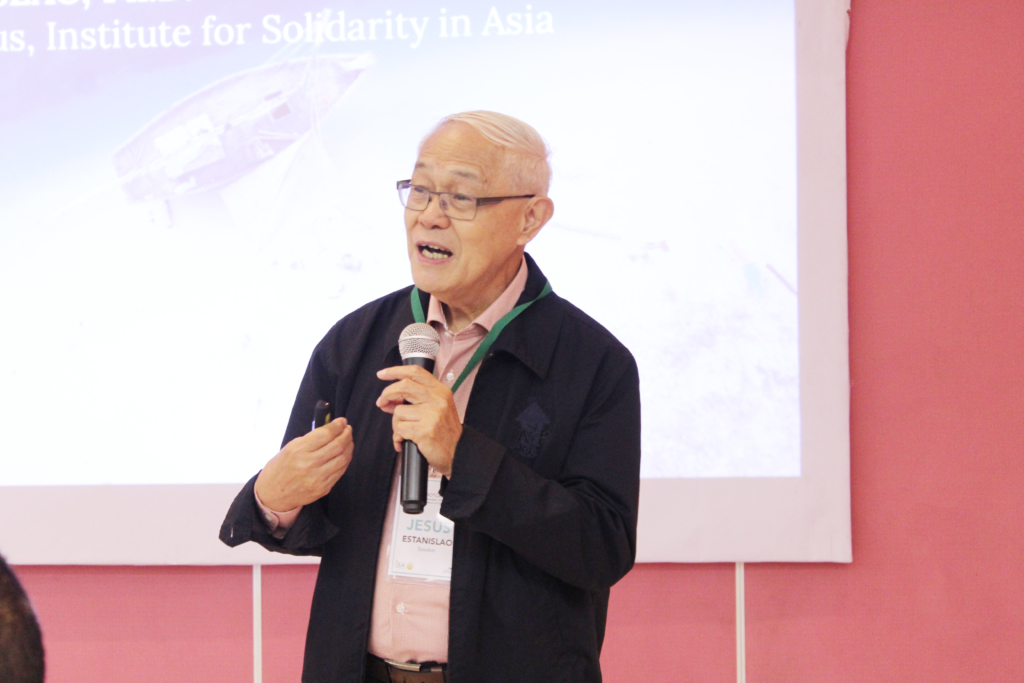
ISA Chairman Emeritus Dr. Jesus P. Estanislao delivers his lecture at the 16th Governance Boot Camp in Baguio City.
As a country and as Filipinos, we have come rather far. There’s a tendency on our part to talk badly about the country and its state of affairs, but the perspective of Asia in Europe is different from the perspective of Filipinos in the Philippines. They look at Asia with awe—and when they look at the Philippines, they say that with the exception of one or two guys, we’re doing okay.
I myself claim, there has been dramatic transformation in the Philippines.
In 1986, we had four major exports. Looking at the economy meant looking at how much rice, sugar, copper, and timber we were producing, and at how much we had in dollar reserves. It was a relatively easy economy to track. Fast forward to 2016, and we no longer hear of sugar or coconut among our top exports. Instead we hear about IT and our Filipino workforce. After intense discussions about population explosion in the 70s, our biggest economic resource is now our people. This shows that all these years after EDSA, there has been significant transformation in our economy.
What else does this mean? We continue to be faced with many problems, among them drugs, corruption, and poverty. Quite frankly, this is largely due to many of our government institutions performing below the global standard. Our main airport, NAIA, is much improved. It used to be the worst. Now it’s ten points from the worst. But what we need to be is ten points from the top. That would be a real transformation.
Wanting this transformation also means that one national agency after another, one local government unit after another, will have to do their job. And as we talk about our problems that are creating dissention and anxiety, we also need to ask, what is the solution? We tend to look at who the president is and who the next president will be. But they come and go. The Philippines stays. Transformation is not a question of today and tomorrow, or even of today and six years from now. It is a long-term end, of which governance is the means.
Practically speaking, what does governance entail?
- Identity. We tend to look badly at ourselves, but governance asks us to build from our core—the solid one, the good one. Every institution has something good. Every person has something good. If you belong to the public sector, what are the core values that you want to use as foundation stones for the Philippine government? What is the mission you need to accomplish?
- Vision. What is the shared dream of those working in your organization? What is the ideal future state for everybody connected to the organization?
- Strategy. Finally, we cannot just be dreaming. How do we realize our vision? This is where the discipline of governance comes in, pushing us to deliver results according to a sound strategy.
Governance imposes the discipline that can break the walls of the personality-orientated,
business-as-usual, and purely tactical ways of running our public sector institutions. Pursued over the long-term, it can bring about a deep change: a breakthrough.
This was a very poor country. Now, we’re no longer so poor. We used to have less than 2 billion US dollars in our reserves. Now we have 90 billion. Our central bank is regarded as the best in Asia. Where we used to be junk, we are now investment grade. This happened, not overnight, but through several presidents and department secretaries.
If you want something to change, you must be willing to do the long-term work of transforming your institution. You must be willing to do your part in your sector so that the Philippines can once again be respected throughout Asia—and of course, so that your constituencies can receive the public service they need and deseve.
Let me end with this statement: Development has a new name, and it is governance.
An excerpt from ISA founder Jess Estanislao’s 2017 “Foundations of Transformation” lecture.

